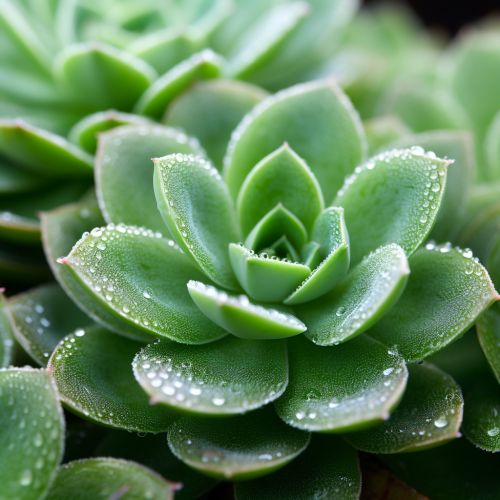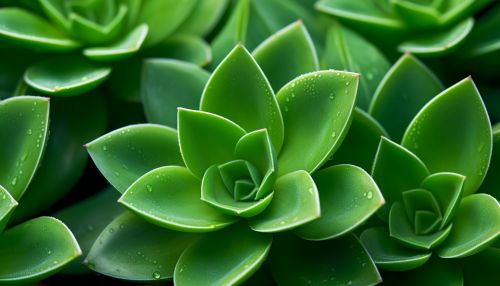Crassulacean Acid Metabolism
Introduction
Crassulacean Acid Metabolism (CAM) is a specialized form of photosynthesis that allows plants to survive in arid and semi-arid environments. This photosynthetic adaptation, named after the plant family Crassulaceae, is characterized by the temporal separation of carbon dioxide uptake and fixation. CAM plants are able to take up carbon dioxide at night when the stomata are open, and store it in the form of malate for use during the day when the stomata are closed. This allows the plants to minimize water loss during photosynthesis, a critical adaptation for survival in dry environments.
Biochemical Mechanism
The biochemical mechanism of CAM involves a series of enzymatic reactions that occur in the cytoplasm and chloroplasts of the plant cells. The process begins at night when the stomata are open, allowing carbon dioxide to enter the plant. The carbon dioxide is then converted to bicarbonate by the enzyme carbonic anhydrase. The bicarbonate is subsequently fixed to phosphoenolpyruvate (PEP) by the enzyme PEP carboxylase, forming oxaloacetate. Oxaloacetate is then reduced to malate by malate dehydrogenase, and the malate is stored in the vacuole until the following day.


During the day, when the stomata are closed to prevent water loss, the stored malate is decarboxylated to produce pyruvate and carbon dioxide. The carbon dioxide is then fixed into sugars via the Calvin cycle, while the pyruvate is transported back to the cytoplasm where it is converted back to PEP, ready for the next cycle of carbon fixation.
Ecological Significance
The ecological significance of CAM lies in its ability to allow plants to survive in environments with limited water availability. By opening their stomata at night, when the temperature is lower and humidity is higher, CAM plants are able to minimize water loss due to transpiration. This adaptation is particularly important in arid and semi-arid environments, where water is a limiting factor for plant growth and survival.
CAM plants are also able to tolerate high levels of carbon dioxide, which is beneficial in environments where the concentration of carbon dioxide is high, such as in volcanic soils or in the vicinity of geothermal vents.
Evolution of CAM
The evolution of CAM is thought to have occurred in response to environmental pressures, particularly the need to conserve water in arid and semi-arid environments. It is believed that CAM evolved independently in various plant lineages, a phenomenon known as convergent evolution. This is supported by the fact that CAM is found in over 30 different plant families, including both monocots and dicots.
The evolution of CAM is also associated with changes in leaf anatomy and morphology, such as the development of succulent leaves and stems for water storage, and the presence of sunken stomata to reduce water loss.
CAM Plants
There are over 3000 known species of CAM plants, representing a diverse range of plant families. These include many species of cacti, succulents, and bromeliads, as well as some orchids and members of the pineapple family. Some common examples of CAM plants include the jade plant (Crassula ovata), the pineapple (Ananas comosus), and the Christmas cactus (Schlumbergera spp.).
CAM plants are often characterized by their thick, fleshy leaves or stems, which are adaptations for storing water. They are also typically slow-growing, as the CAM process is less efficient than the more common C3 and C4 photosynthetic pathways.
